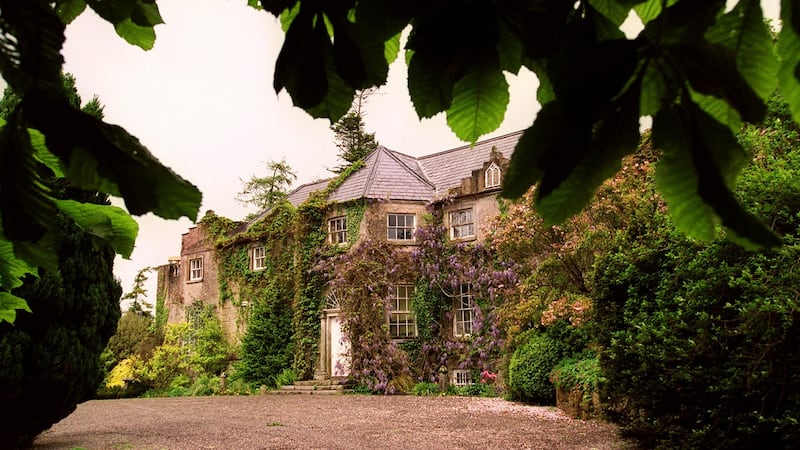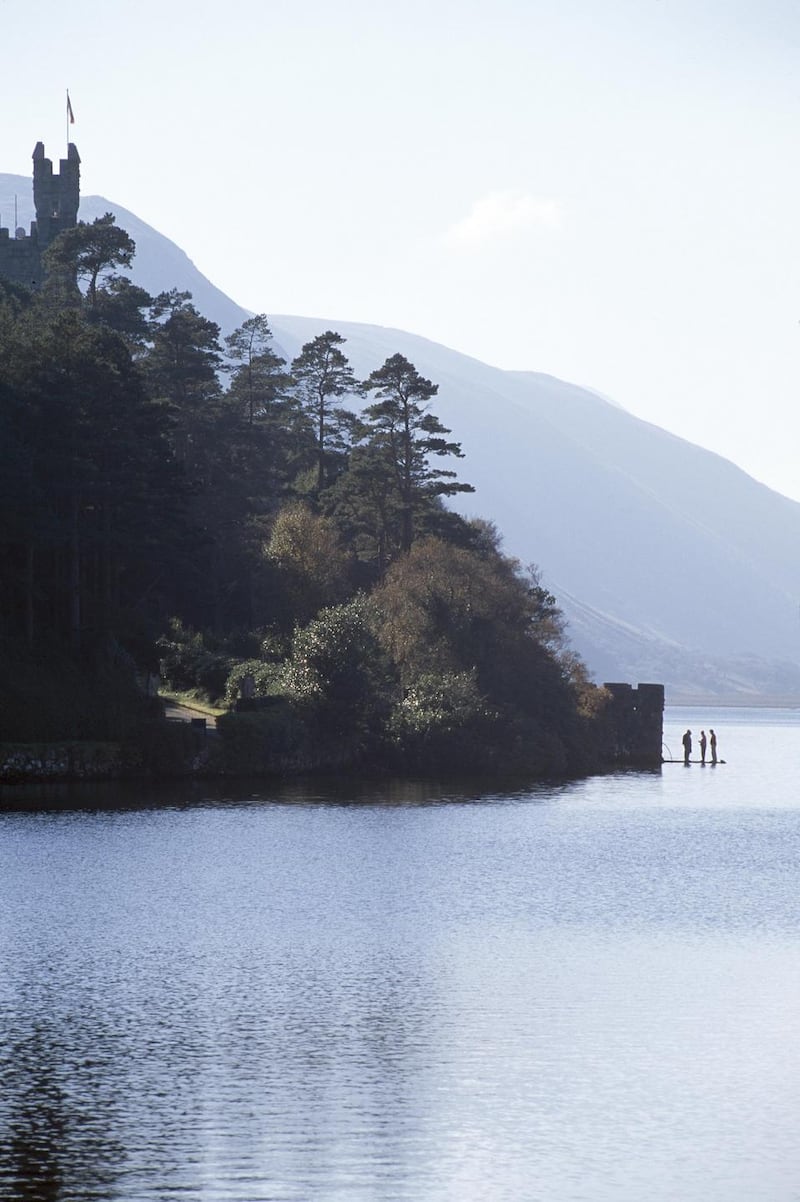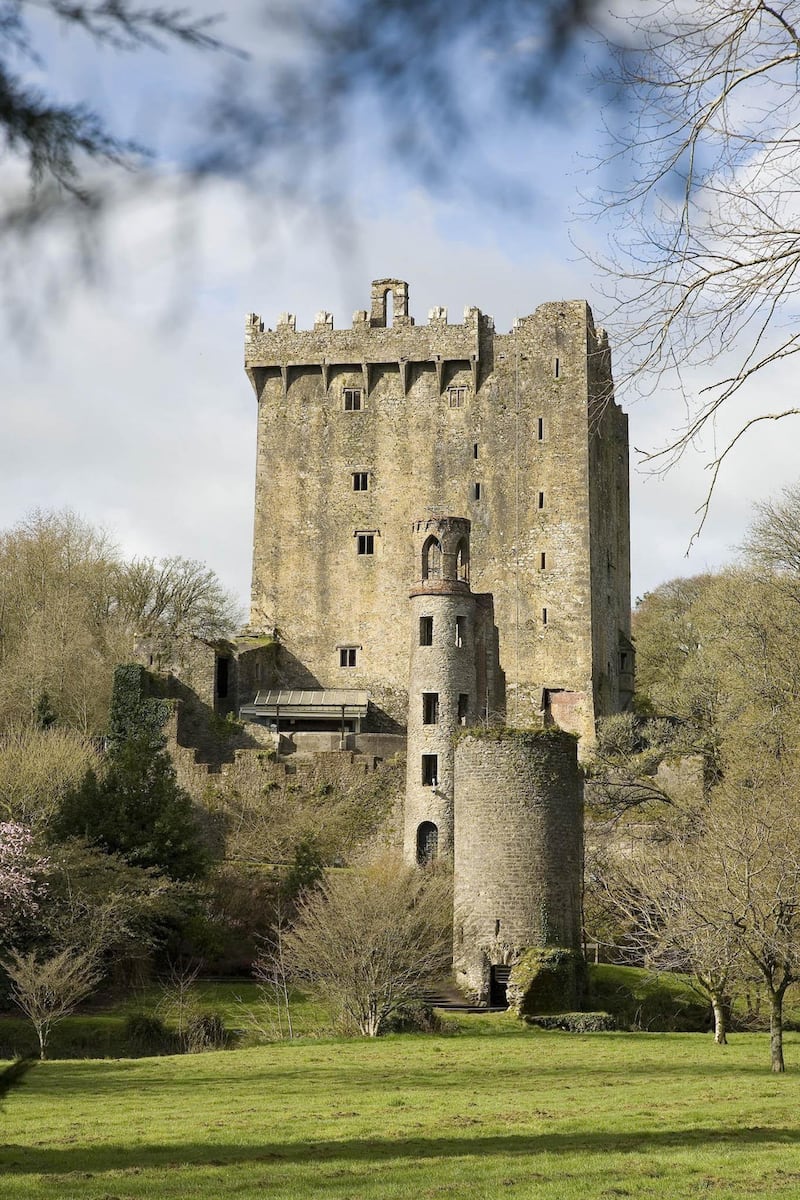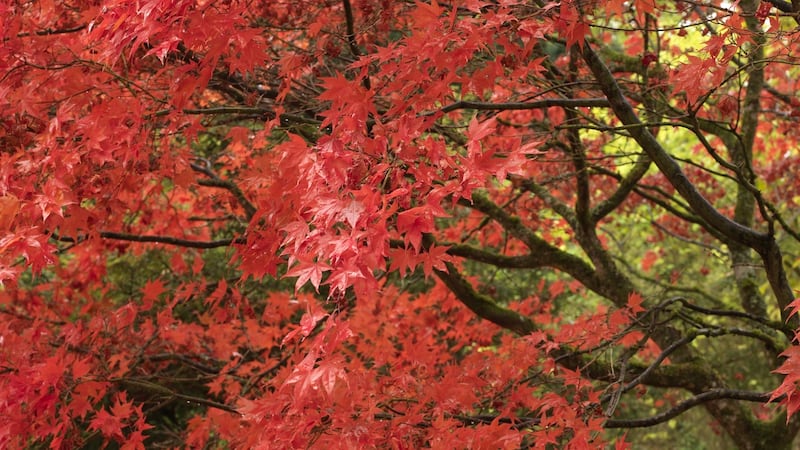What is it about autumn that fills most of us with gentle melancholy as well as a strange sort of restlessness? All it takes is a sniff of the toffee-scented foliage of the katsura tree to take me back to my time, many moons ago, as a student at the National Botanic Gardens in Glasnevin. Or the sweet whiff of over-ripe apples, wild mushrooms, candle smoke and frost-smudged blackberries to make me think of childhood Halloweens.
If you’re a gardener, then October is the month of falling temperatures, muddy boots, decay and deepening shadows, a time to celebrate the fleeting bittersweet beauty of nature in all its brilliant shades of honey, fire and copper before it plunges into winter proper. With that in mind, here’s a little shortlist of just some of the country’s loveliest autumn gardens to visit at this time of year.
Killruddery: The centuries-old gardens of Killruddery in Bray, Co Wicklow, are bewitching at any time but October lends them a special magic as the fiery-coloured autumn foliage of its ancient woodlands and giant specimen trees lights up the surrounding landscape. Make sure to take a ramble up to what's known as the Rock (the rocky outcrop to the east of Killruddery House) to fully appreciate the beauty of its setting within the surrounding Wicklow mountains, after which I'd highly recommend a visit to Killruddery's farm shop, café and walled garden.
Throughout October the gardens are open only at weekends (9.30am-6pm) but there are still plenty of events to enjoy including its weekly farmers' market (every Saturday 10am-3pm),a one-day workshop/mushroom hunt on Sunday, October 20th with expert mycologist Bill O'Dea and the garden's annual pick-and-carve Pumpkin Extravaganza and scarecrow competition next weekend.
See killruddery.com

Altamont: Although Altamont House itself doesn't match the grandeur of some of the much larger historic properties mentioned here, its charming gardens have a very special magic all their own. Managed by the OPW and tended by head gardener Paul Cutler, the 40 acre grounds include a large ornamental lake, Altamont's famously atmospheric Nun's Walk (a dramatic procession of mature beech) and a glorious woodland walk that wends its way through a shady ice-age glen filled with moss-covered granite boulders and trickling streams, before opening up by the banks of the majestic river Slaney. Located near Ballon in Co Carlow, this is a place to drink in the atmosphere and relish the seasonal beauty of nature.
You'll also find one of Ireland's loveliest garden centres/plant nurseries tucked away inside Altamont's walled garden along with a coffee shop (open weekends only) that serves hot drinks and delicious freshly baked cakes.
See heritageireland.ie; carlowtourism.com

Glenveagh: Few gardens enjoy as dramatic a setting as those of Glenveagh Castle in Churchill, Letterkenny, Co Donegal, which sits below the craggy peaks of Errigal and Doolish in the heart of Glenveagh Park, surrounded by moorland, woodlands and the silver-grey waters of Lough Veagh. Now owned by the state and managed by head gardener Sean O Gaoithin, the Victorian castle's 27 acre historic garden is known for its large collection of trees and shrubs and is the work of a series of former owners, brilliant plantspeople, gifted gardeners and landscape architects.
To help conserve the park's fragile habitats, access to the gardens is only by shuttlebus, a five-minute journey that takes visitors deep into the starkly beautiful terrain of rural Donegal.
See glenvaghnationalpark.ie
Mount Congreve: The lifework of its former owner Ambrose Congreve, who died in 2011 at the venerable age of 104, Mount Congreve in Co Waterford is famed worldwide as one of Ireland's greatest gardens. Now owned by the State and in the expert care of its long-standing head gardener/curator Michael White, its wonderful woodlands offer magnificent vistas across the river Suir and the surrounding lush Waterford countryside, and are filled with massed plantings of choice, acid-loving trees and shrubs including hundreds of different types of Japanese maples, hydrangeas, enkianthus, pieris, disanthus and cercidiphyllum.
Next weekend (October 26th-28th) young visitors to the 70 acre garden can enjoy its Magical Halloween Woodland Weekend, while the garden also now has its own cafe and garden shop
See mountcongreve.com

Blarney Castle: Even if you have no intention of ever kissing the famous Blarney Stone (I'm completely with you on that), 15th-century Blarney Castle's uniquely beautiful setting and magnificent parkland and gardens make it a wonderful place to visit. Some of its planting dates back to the 1800s, other parts were designed by the late, great British nurseryman and horticulturist Sir Harold Hillier while more recently head gardener Adam Whitbourn has added his own distinctive stamp with the addition of many new areas including the magnificent fern garden, the Himalayan walk and Blarney's Irish garden.
Home to more than 1,000 notable trees', some of them centuries old, at this time of year the castle's gardens, arboretum and parklands take on the most glorious autumnal hues. Children will also love the castle's poison garden, home to an intriguing collection of plants, some so toxic or so rich in narcotic or hallucinogenic properties that they're grown within tall, protective metal cages to ensure the safety of visitors.
See blarneycastle.ie
Above is just a taster of the many wonderful Irish gardens open to the public where visitors can enjoy beautiful displays of autumn colour at this time of year . Others include Powerscourt, Kilmacurragh and Mount Usher in Co Wicklow (powerscourt.com ; botanicgardens.ie ; mountushergardens.ie); Kylemore Abbey in Co Galway (kylemoreabbey.com); Mount Stewart and Rowallane in Co Down (nationaltrust.org.uk); the National Botanic Gardens in Dublin (botanicgardens.ie), Woodstock in Co Kilkenny (woodstock.ie) and Birr Castle in Co Offaly (birrcastle.com).

This Week in the Garden:
There's still just enough time (but hurry) to sow seed of many different kinds of hardy flowering annuals such as cornflowers, ammi, calendula, Papaver somniferum and orlaya for bigger, more florieferous, earlier-flowering plants than their spring-sown equivalents. October is also an excellent time to sow sweet pea seed for the same reason. Recommended stockists of seed include all good Irish garden centres as well as online suppliers such as mrmiddleton.com and seedaholic.com. In the case of sweet pea seed, remember to protect the seed and baby seedlings from mice, which like to eat them.
It’s time to say goodbye to those tatty container displays of summer bedding and replace them with a selection of hardy, handsome foliage plants plus generous handfuls of spring flowering bulbs and bedding to bring some welcome cheer in the months ahead. For evergreen interest, use trailing ivy, Christmas box, skimmia, (Sarcococca) bergenia, Carex testacea, gaultheria, heuchera, lamium, ajuga, pittosporum, pieris, rosemary, ferns such as Polystichum setiferum and Polypodium vulgare and the ultra long-flowering Hellebore ‘Winterbells’.
Bulbs suitable for container growing include tulips, scillas, chionodoxa, muscari, Cyclamen coum and the more compact varieties of narcissus while examples of winter/spring bedding include violas, wallflowers and polyanthus . Some of the shrubby species listed will eventually outgrow their containers, at which point they can be transplanted into the garden or given away to gardening friends. Before replanting, don’t forget to replace the top 15-20cm of compost and add a gentle sprinkle of slow-release organic granular fertilizer.
Visit This….
Herbarium in Focus, the exhibition currently on display at the National Botanic Garden in Glasnevin showcasing the key role that herbariums (collections of carefully catalogued, historic, dried and pressed plant specimens) play in our understanding of nature, science and history. As part of the Office of Public Works' mission to promote awareness of the work of the country's National Herbarium, which is home to a staggering 600,000 individual dried plant specimens, some of them centuries-old, members of the public are also invited to bring plant specimens along to the gardens that they'd like help in identifying.
See botanicgardens.ie
Dates For Your Diary…
Tuesday, October 22nd (8pm), Foxrock Parish Pastoral Centre, 18 Kill Lane, Dublin 18, Secrets of a Small Garden, a talk by TJ Maher of Patthana Gardens in Kiltegan, Co Wicklow on behalf of Foxrock & District Garden Club, all welcome.
Wednesday, October 23rd (8pm), Wesley House, Leeson Park, Ranelagh, Dublin 6, To the Mountains of Myanmar, a lecture by Seamus O'Brien, author, horticulturist and head gardener of Kilmacurragh Botanic Gardens in Co Wicklow on behalf of the RHSI. See rhsi.ie
Thursday, October 24 (8pm), Northridge House Castle Road, Mahon, Co Cork, A Tale of Shade, a talk by gardener and nursery owner Hester Forde of Coosheen Gardens on behalf of Cork Alpine/Hardy Plant Society.












